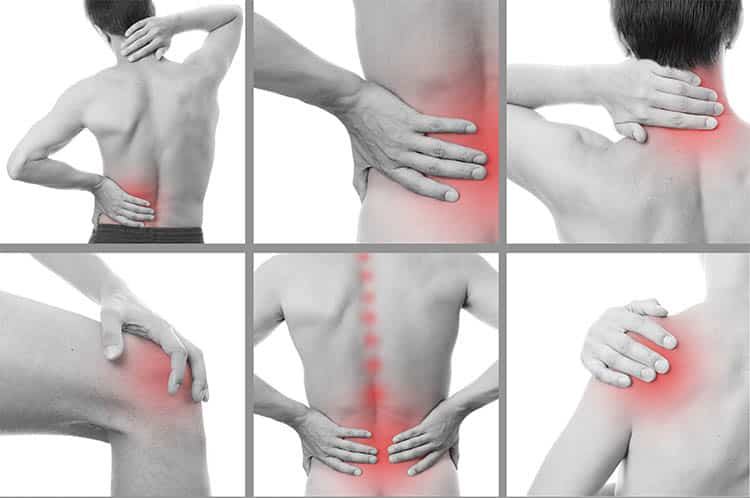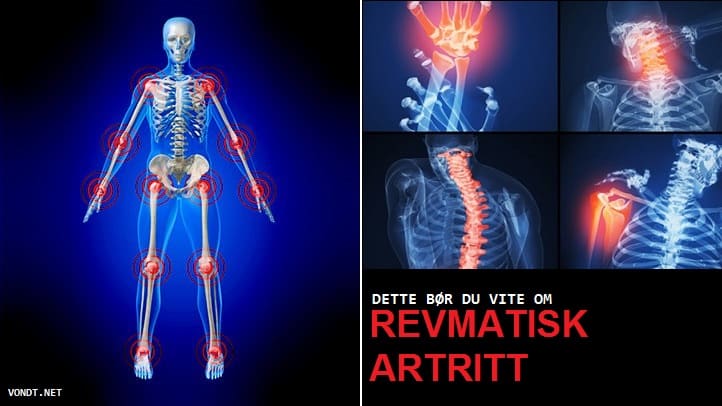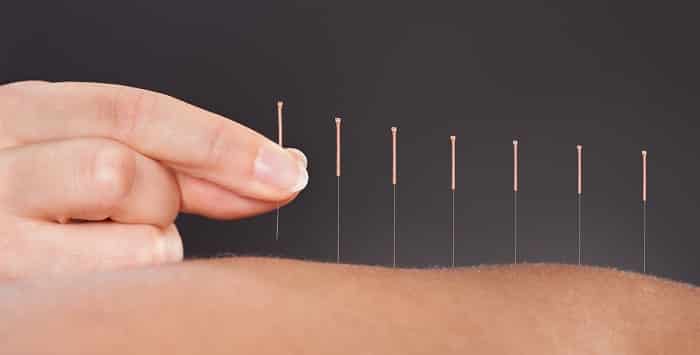Fibromyalgia and substance P: A painful worry
Last updated 24/02/2024 by The pain clinics - Interdisciplinary Health
Fibromyalgia and substance P: A painful worry

Here we take a closer look at the connection between fibromyalgia and substance P. Substance P is a biochemical pain modulator that affects pain signals - and which plays a central role in the pain picture in people with the chronic pain syndrome fibromyalgia.
Fibromyalgia is a chronic, multifactorial chronic pain syndrome. The diagnosis involves both neurological and rheumatological components - and is one of the most complex pain syndromes we know of. Fortunately, research into this diagnosis is progressing, and more and more important discoveries are being made, such as the relationship between fibromyalgia and thin fiber neuropathyand fibromyalgia and sleep apnea (the links open in new browser windows, so you can finish reading this article first). Research may also show an interesting link between fibromyalgia and substance P – a biochemical pain modulator that appears to play a central role.
Substance P: A pain-producing factor among people with fibromyalgia

Research in neurological journals, including recognized ones 'Frontiers in Cellular Neuroscience', shows a clearly increased content of substance P in fibromyalgia patients.¹ But to understand what this really means, we need to take a closer look at substance P.
Tips: Mobility exercises can help maintain movement and flexibility. Towards the end of the article shows chiropractor Alexander Andorff presented a video with recommended mobility exercises for people with fibromyalgia.
What is substance P?
Substance P is a neuropeptide consisting of 11 amino acids – an undecapeptide to be exact. Simply put, a neuropeptide is a signaling substance that affects functions in the nervous system. The main function of substance P is as a nerve signaling substance and pain modulator - which is also pro-inflammatory. It affects the pain signals and how we experience pain by changing the function of the pain signal-carrying nerve pathways.² In addition to affecting pain, substance P also plays a central role in:
Bowel function
Memory function
Inflammations (pro-inflammatory)
Blood vessel formation
Dilation of blood vessels
Cell growth
We are already beginning to gain a clear insight into how substance P plays a central role in fibromyalgia. Many people with fibromyalgia will also raise their eyebrows when they see how substance P can affect the gut and cognitive function, as we know that many people with the chronic pain syndrome suffer from irritable bowel and brain fog (ed. note also called fibrous mist).
Our clinic departments at Vondtklinikkene (click here for a complete overview of our clinics), including in Oslo (Lambert seats) and Viken (Eidsvoll Sound og Raw wood), has a distinctively high professional competence in the investigation, treatment and rehabilitation of pain in muscles, tendons, nerves and joints. Toe contact us if you want the help of therapists with expertise in these fields.
But how does substance P affect people with fibromyalgia?

As we now gradually unravel substance P - we also understand more of how it can affect people with fibromyalgia. Researchers also believe that substance P plays a central role in why some pains become chronic - and others do not.³
Substance P and increased pain
A higher concentration of substance P in our serum levels will contribute to increased pain, symptoms and inflammatory reactions. Hyperalgesia, which involves greatly increased reporting of pain, is a central component in fibromyalgia - and the researchers therefore believe that this can be linked back to substance P. Here it may be of interest to many to read that heat salve with capsaicin has a documented effect on the content of substance P in the pain nerves - and has shown to be able to reduce this content when applied.4 However, the researchers describe that the total effect is not immediate, as it can take 1-4 weeks of application to reduce the concentration of the signaling substance and desensitize the pain areas.
Recommendation: Application of heat salve with capsaicin (link opens in a new browser window)
This natural heat salve contains, among other things, capsaicin. The active ingredient in chili. It is this active ingredient that the researchers published in the study Journal of British Anaesthesia showed that it had a documented effect in reducing substance P.4 You only need to use very small amounts, so a tube usually lasts quite a while. Do not apply more than a very thin layer (one drop is enough). Press the image or here to read more about how the heat salve works.
Substance P can be a central cause of chronic pain
Research also shows that substance P appears to activate certain pain pathways and pain receptors. One therefore links the elevated content of this signaling substance with the "vicious circle" that fibromyalgia entails - and also believes that so-called fibromyalgia flare-ups (particularly bad periods) can be directly linked to periods of higher concentrations of substance P in the body.
Also found in patients with arthritis (rheumatoid arthritis)

It is very important to point out that other diagnoses also experience higher concentrations of substance P than the general population. Previous research has shown that joints with a higher concentration of substance P develop more severe rheumatic arthritis - which thus includes more wear and tear changes, inflammation and breakdown of the joint.5 Thus, it is believed that this plays a central role in the development of arthritis and an answer to why certain joints develop more severe arthritis than others.
- Pain clinics: We can help you with pain in muscles and joints
Our publicly authorized clinicians at our affiliated clinics The pain clinics has a distinctive professional interest and expertise in the investigation, treatment and rehabilitation of muscle, tendon, nerve and joint ailments. We work purposefully to help you find the cause of your pain and symptoms - and then help you get rid of them.
Treatment to reduce substance P?

There are several forms of treatment that have a documented effect in relation to reducing the concentration of substance P. This includes, among other things:
Low-dose laser therapy
Massage and muscular treatment
Relaxation techniques
For patients with Bekhterev's, movement is one of the most important things. We know that inactivity and prolonged sitting lead to increased stiffness, more pain and inflammatory reactions.
1. Low-dose laser therapy and substance P
Previous meta-analyses, the strongest form of research, have shown that therapeutic laser therapy is a proven good treatment technique for people with fibromyalgia.6 Other studies have been able to document a reduction of substance P in animals with chronic pain.7 All our publicly authorized practitioners know our clinic departments belonging to Vondtklinikkene has expertise in the use of therapeutic laser therapy.
2. Massage, muscular treatment and dry needling

Studies have shown that patients with fibromyalgia can have a positive effect from massage and physical therapy. But remember that the massage must not be too tough. Improved sleep and less substance P were also documented in measurements after the treatments.8 In addition to this, meta-analyses have also been able to show a reduction in muscle pain among people with fibromyalgia when treated with intramuscular acupuncture (dry needling / IMS).9
3. Relaxation techniques
A daily focus on relaxation can help reduce stress. And we know that too much stress can really be a trigger for increased pain and symptoms among people with fibromyalgia. This is precisely why we want to emphasize the importance of setting up relaxation routines. Examples can include a daily walk, relaxation on an acupressure mat or in a neck hammock (with positive thought therapy at the same time) or other activities that you know give you peace of mind and body.
Good relaxation tip: 10-20 minutes daily in neck hammock (link opens in a new browser window)
Many people with fibromyalgia suffer a lot from tension in the upper back and neck. A neck hammock is a well-known relaxation technique that stretches the muscles and joints of the neck - and can therefore provide relief. In the case of significant tension and stiffness, you can expect to feel the stretch extra well the first few times. Thus, it may be wise to only take short sessions at the start (around 5 minutes). Press the image or here to read more about how it works.
Pain clinics: A holistic treatment approach is important
Feel free to contact one of our clinic departments belonging to Vondtklinikkene if you would like more information about how we use combinations of treatment techniques – including massage, nerve mobilization and therapeutic laser therapy – to achieve the best possible results.
VIDEO: 5 adapted mobility exercises for fibromyalgia
In the video above shows chiropractor Alexander Andorff v/ Vondtklinikkene ward Lambertseter in Oslo presented five gentle exercises for patients with fibromyalgia. Stimulating movement and circulation is very important for maintaining good function in muscles and joints.
«Summary: As you have understood, the signaling substance substance P appears to play a central role in fibromyalgia pain. It is also important to note that the concentration of substance P can be reduced with active measures such as adapted physical therapy, intramuscular acupuncture (IMS) and MSK laser therapy. Application of heat salve with capsaicin (link opens in new window) is also a natural measure that should be tested to see if it has an effect."
Join our Rheumatism and Fibromyalgia Support Group
Feel free to join the Facebook group «Rheumatism and Chronic Pain - Norway: Research and news» (Press here) for the latest updates on research and media articles on rheumatic and chronic disorders. Here, members can also get help and support - at all times of the day - through the exchange of their own experiences and advice. Otherwise, we would greatly appreciate it if you would follow us on the Facebook page and Our Youtube channel (the link opens in a new window).
Please share to support those with rheumatism and chronic pain

Hello! Can we ask you a favor? We kindly ask you to like the post on our FB page and to share this article on social media or via your blog (please link directly to the article). We are also happy to exchange links with relevant websites (contact us on Facebook if you want to exchange links with your website). Understanding, general knowledge and increased focus is the first step towards a better everyday life for those with rheumatism and chronic pain diagnoses. So we hope that you will help us with this battle of knowledge!
The pain clinics: Your choice for modern interdisciplinary health

Our clinicians and clinic departments always aim to be among the top elite in the field of investigation, treatment and rehabilitation of pain and injuries in muscles, tendons, nerves and joints. By pressing the button below, you can see an overview of our clinics - including in Oslo (incl Lambert seats) and Viken (Raw wood og Eidsvoll Sound).
Sources and research
1. Theoharides et al, 2019. Mast Cells, Neuroinflammation and Pain in Fibromyalgia Syndrome. Front Cell Neurosci. 2019 Aug 2;13:353. [PubMed]
2. Graefe et al, 2022. Biochemistry, Substance P. StatPearls. [PubMed]
3. Zieglgänsberger et al, 2019. Substance P and pain chronicity. Cell Tissue Res. 2019; 375(1): 227–241. [PubMed]
4. Anand et al, 2011. Topical capsaicin for pain management: therapeutic potential and mechanisms of action of the new high-concentration capsaicin 8% patch. Br J Anaesth. 2011 Oct; 107(4): 490–502. [PubMed]
5. Levine et al, 1984. Intraneuronal Substance P Contributes to the Severity of Experimental Arthritis. Science 226,547-549(1984).
6. Yeh et al, 2019. Low-Level Laser Therapy for Fibromyalgia: A Systematic Review and Meta-Analysis. Pain Physician. 2019 May;22(3):241-254. [PubMed]
7. Han et al, 2019. Involvement of Substance P in the Analgesic Effect of Low-Level Laser Therapy in a Mouse Model of Chronic Widespread Muscle Pain. Pain Med. 2019 Oct 1;20(10):1963-1970.
8. Field et al, 2002. Fibromyalgia pain and substance P decrease and sleep improves after massage therapy. J Clin Rheumatol. 2002 Apr;8(2):72-6. [PubMed]
9. Valera-Calero et al, 2022. Efficacy of Dry Needling and Acupuncture in Patients with Fibromyalgia: A Systematic Review and Meta-Analysis. [Meta-analysis / PubMed]
Article: Fibromyalgia and substance P – a painful worry
Written by: Our publicly authorized chiropractors and physiotherapists at Vondtklinikkene
Fact check: Our articles are always based on serious sources, research studies and research journals - such as PubMed and the Cochrane Library. Please contact us if you spot any errors or have comments.
FAQ: Frequently asked questions about fibromyalgia and substance P
1. How can people with fibromyalgia reduce pain in everyday life?
Here we wish there was a clear and simple answer, but the truth is that the path to pain relief in everyday life is complicated and extensive. Not all patients with fibromyalgia respond in the same way, but we know that relaxation techniques, physical therapy for muscles and joints, intramuscular acupuncture, adapted rehabilitation exercises and MSK laser therapy can provide relief.







Leave a reply
Want to join the discussion?Feel free to Contribute!